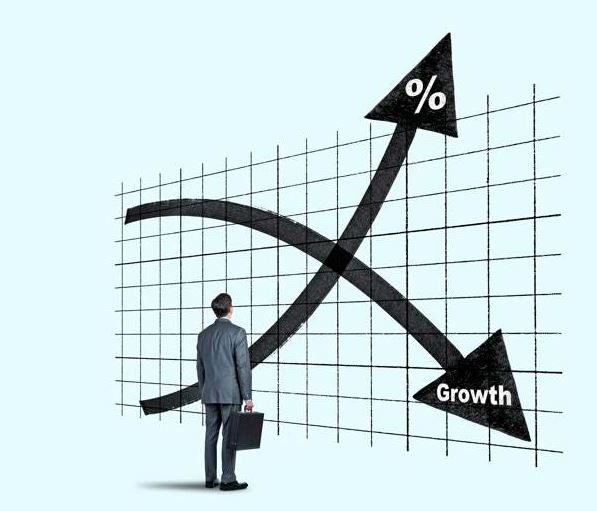Financial markets are caught in a tug-of-war between continued inflation and recession worries as they try to guess the Federal Reserve’s next move. This means that investors are potentially ignoring a much more dangerous outcome: stagflation.
The combination of slower economic growth with persistent inflation could potentially shatter hopes for a reversal of the Fed’s aggressive campaign to curb inflation by raising interest rates. This would expose a lot of market misjudgment, which would drive up the price of stocks, loans and other risky assets this year.

This is what some economists call “stagflation lite” and it represents a worrisome macroeconomic backdrop for fund managers still licking their wounds from the brutal fall in stock and bond prices in 2022.
Historical examples of an economy mired in stagflation are limited, so there is little to guide investment in this type of economy. For many fund managers, the preferred trades are high-quality bonds, gold, and stocks of companies that can weather the economic downturn.
“There should be something like stagflation this year — sticky inflation and slowing growth — until something breaks and the Fed is forced to cut rates,” said Kelly Wood, money manager at Schroders Plc. “We believe that bonds will become the main asset class in 2023. Higher returns for a long time until something breaks is not a very attractive environment for risky assets and a good environment for profiting from fixed income.”
GDP
Bloomberg Economics sees rising risks of stagflation, calling it “stagflation lite”, and the government’s initial assessment of economic growth in the first quarter confirms their point. Gross domestic product grew at an annualized rate of 1.1% between January and March, the Bureau of Economic Analysis reported on April 27. This topped the median estimate by economists in a Bloomberg poll and marked a slowdown from the previous quarter’s 2.6% growth. Meanwhile, the Fed’s preferred inflation benchmark, which excludes food and energy, rose to 4.9% in the first quarter.
Inflationary pressure
This continued inflationary pressure means policy makers are likely to raise rates again on May 3, even as recent banking stress is tightening credit conditions in a way that threatens to exacerbate the Fed’s efforts to curtail demand. Bloomberg Economics’ base case is that the Fed will take a long pause after a rate hike this week, but they warn of a growing risk that the central bank may need to do more.
This highlights the risk of market misjudgment in short-term interest rates, which suggest a one-quarter point to two-quarter point rate cut by the end of this year.
“The stagflationary environment that I see in my forecast for the end of this year, as well as for 2024, will be something like zero to 1% growth, closer to zero, and still inflation above 3%,” says Anna Wong, chief US economist at Bloomberg Economics.

Yield curve
The yield curve remains highly inverted, a historical harbinger of a recession. The underlying yield of 10-year bonds at about 3.5% is about 61 basis points lower than the yield of 2-year bonds.
Yet the curve is steepening again, and the gap has been narrowing since hitting as much as 111 basis points on March 8 — the deepest inversion since the early 1980s — as the failures of some regional banks heighten US recession worries and fuel expectation of a rate cut by the Fed.
Hedge funds have increased bets against US equities, a sign that they believe the stock market is undervalued after a strong start to the year. They are also betting big against treasuries — leveraged funds, as of April 25, made nearly the largest bets ever on a decline in 10-year bond futures.
Precious metals
Some investors are turning to precious metals as a safe haven. Matthew McLennan, of First Eagle Investments, said that about 15% of the company’s global portfolios are in bullion and gold miners as a potential hedge against inflation and a depreciating dollar amid fears of a “wider systemic crisis” in the markets.


